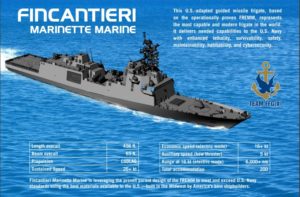
Gibbs & Cox, Inc. said May 4 it will be part of the Financtieri FFG(X) frigate team while the other competitors expressed disappointment in the loss. Gibbs & Cox said it will serve as the design agent for the FFG(X) program and has a preexisting working relationship with the shipbuilder. The Navy awarded Fincantieri’s Marinette Marine a $795 million detail design and construction (DD&C) contract on April 30 to deliver up to 10 total FFG(X) frigates. The immediate contract covers…

 By
By 











